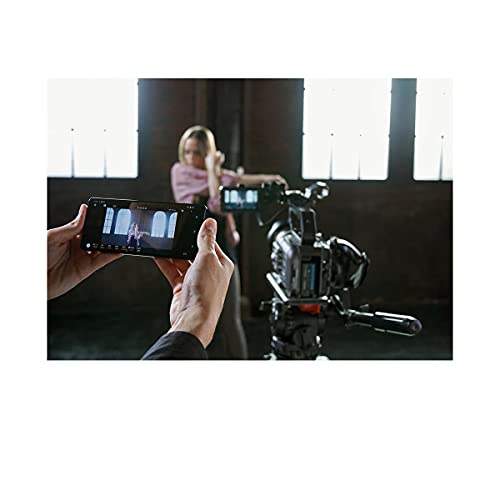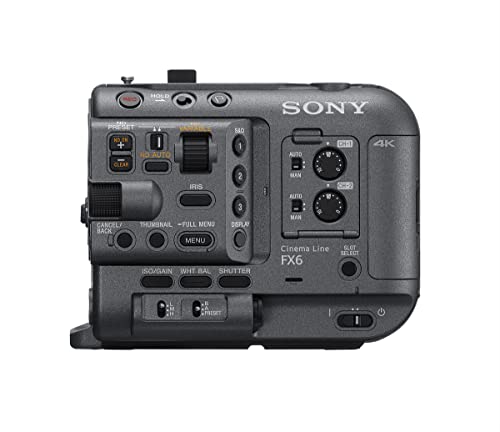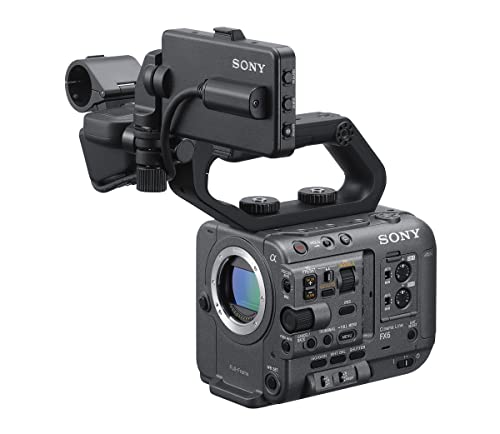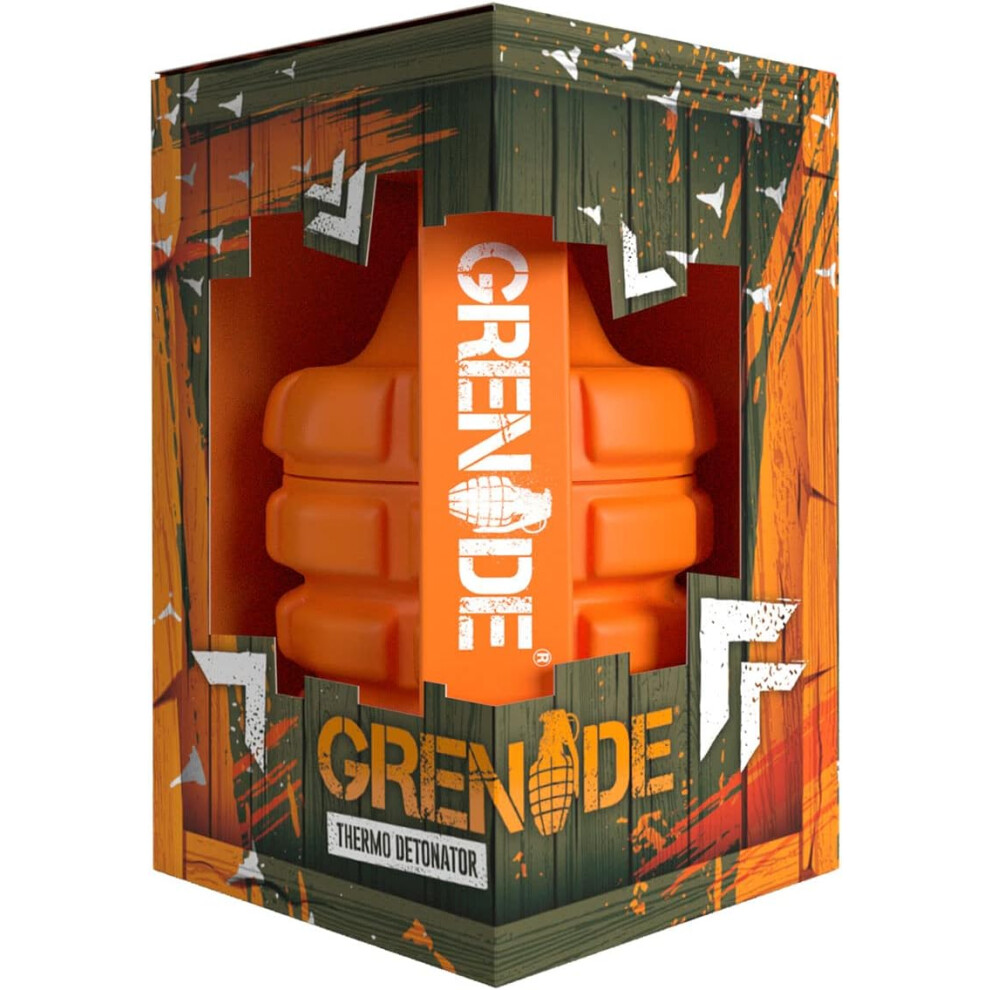
Join us as we dive into the showdown between the Canon EOS R5 C and Sony FX6, unraveling which cinema camera really takes the crown for delivering stunning video quality that every filmmaker craves!
In this article, we will compare the Canon EOS R5 C and the Sony FX6, focusing on their video quality capabilities for filmmakers. Join us as we explore which cinema camera stands out in delivering exceptional performance.
Camera Overview: Canon EOS R5 C vs. Sony FX6
| Feature | Canon EOS R5 C | Sony FX6 |
|---|---|---|
| Sensor | 45 Megapixel Full-Frame CMOS | Full-Frame Exmor R CMOS |
| Max Resolution | 8K (8192 x 4320) | 4K (4096 x 2160) |
| Max Frame Rate | 8K at 60fps, 4K at 120fps | 4K at 120fps |
| Video Recording Formats | Internal RAW, H.265, and H.264 | XAVC-I, XAVC-L, and RAW |
| Mount | RF Mount | E Mount |
| Weight | 1.48 lbs (approximately) | 2.0 lbs (approximately) |
| Built-In ND Filters | No | Yes |
Both cameras have their unique strengths, making them appealing to filmmakers. The Canon EOS R5 C is remarkable for its stunning 8K capabilities, perfect for those who want high-resolution filmmaking. In contrast, the Sony FX6 excels in low-light performance, offering features tailored for dynamic shooting environments. Let’s dive deeper into their video quality, low light performance, and usability.
Video Excellence
The Canon EOS R5 C impresses with its exceptional video quality, making it a worthy investment for filmmakers. Its lightweight design and intuitive interface make it user-friendly, although the higher cost may deter some.
Pro Filmmaking
The Sony FX6 stands out with its remarkable autofocus and low-light capabilities, making it a powerful tool for professional filmmakers. While its price is on the higher end, the benefits it offers justify the investment for serious creators.
Canon R5 C
Sony FX6
Canon R5 C
Sony FX6
Canon R5 C
Sony FX6
Camera Overview: Canon EOS R5 C vs. Sony FX6
In this section, we will provide a comprehensive overview of both the Canon EOS R5 C and the Sony FX6, focusing on their key specifications, design features, and intended use in cinematic production.
Canon EOS R5 C
The Canon EOS R5 C is equipped with a 45 Megapixel Full-Frame CMOS sensor, offering exceptional image quality and versatility. With the ability to shoot 8K video at up to 60 frames per second, this camera is designed for filmmakers seeking high-resolution output. The RF mount enhances compatibility with Canon’s premium lens lineup, allowing creative flexibility. Weighing in at approximately 1.48 lbs, the R5 C is both compact and lightweight.
Key Features:
Sony FX6
On the other hand, the Sony FX6 integrates advanced features from Sony’s digital cinema technology and Alpha mirrorless series. Featuring a 10.2MP full-frame back-illuminated Exmor R sensor, this camera excels in low-light conditions with a sensitivity range of up to ISO 409,600. It supports DCI 4K recording up to 60p and FHD 240p, making it highly versatile for diverse filming environments. Though slightly heavier at 2.0 lbs, its compact form doesn’t compromise usability.
Key Features:
By understanding these specifications and features, we can delve deeper into their video quality, low light performance, and usability.
Feature Comparison
Video Quality: Resolution and Frame Rates
When it comes to video quality, both the Canon EOS R5 C and Sony FX6 are impressive, each catering to different filmmaking needs. Let’s break down their recording capabilities regarding resolution, frame rates, and formats.
Canon EOS R5 C
The Canon EOS R5 C shines with its ability to shoot stunning 8K video at up to 60 frames per second. This high resolution is ideal for filmmakers seeking the utmost detail and clarity, making it perfect for large screens and post-production flexibility. Additionally, it supports various recording formats, including internal RAW, H.265, and H.264, giving us options depending on our project’s requirements.
Key Video Specs:
Sony FX6
In contrast, the Sony FX6 focuses on versatility and performance in 4K recording. Its maximum resolution stands at DCI 4K (4096 x 2160) at rates up to 60 fps, while also featuring the ability to shoot in FHD at 240 fps. This makes the FX6 an excellent choice for high-speed action shots. It records in XAVC-I, XAVC-L, and RAW formats, catering to professionals seeking sophisticated workflow options.
Key Video Specs:
Both cameras present unique advantages in video quality, making our choice dependent on specific production needs—whether we prioritize high-resolution 8K filmmaking or versatile 4K capabilities with excellent low-light performance.
Low Light Performance and Dynamic Range
When evaluating the low light performance and dynamic range of the Canon EOS R5 C and the Sony FX6, we find that these features significantly influence our overall video quality, especially in challenging shooting environments.
Canon EOS R5 C
The Canon EOS R5 C, with its 45-megapixel full-frame CMOS sensor, offers impressive low light capabilities, benefiting from a native ISO range of 100 to 51,200, which can expand to 102,400. This allows for crisp images even in dimly lit settings. The camera’s dynamic range performs well, ensuring we capture a good amount of detail in both shadows and highlights, crucial for post-production flexibility. However, as the ISO increases, we might notice a bit more noise compared to its competitor.
Sony FX6
In contrast, the Sony FX6 truly excels in low-light scenarios, boasting a sensitivity range up to ISO 409,600, thanks to its back-illuminated Exmor R sensor. This high sensitivity enables us to shoot in near darkness while maintaining clear, detailed footage. Its dynamic range is rated at 15+ stops, making it exceptional for capturing rich detail across various lighting conditions, giving us the creative freedom to shoot in both bright and shadowed areas without sacrificing quality.
Conclusion
In summary, the Sony FX6 comes out on top for low light performance and dynamic range, making it a preferred choice for filmmakers who frequently work in less-than-ideal lighting conditions. Meanwhile, the Canon EOS R5 C still holds its ground with solid performance but may falter slightly in extreme low light. Whether we prioritize stunning detail in challenging environments or an all-around capable camera, understanding these differences is vital for making an informed decision.
Usability and Ergonomics for Filmmakers
In this section, we will focus on the user experience of each camera, including their controls, menu systems, and overall ergonomics. We’ll discuss how these factors affect usability during production, especially in fast-paced shooting environments.
Canon EOS R5 C
The Canon EOS R5 C features a user-friendly interface with clearly labeled buttons and a customizable control layout, making it easy for filmmakers to access essential functions quickly. The camera’s 3.2-inch tilting touchscreen is intuitive and responsive, allowing us to navigate settings with ease. We particularly appreciate its robust autofocus system, which utilizes Dual Pixel CMOS AF II technology for reliable tracking, crucial during dynamic shoots.
Sony FX6
On the other hand, the Sony FX6 emphasizes a more complex menu structure that can be somewhat daunting at first. However, it packs a wealth of customization options, perfect for experienced filmmakers. The touchscreen interface is also responsive, but navigating through layered menus can slow us down when speed is essential. The camera’s physical design features numerous customizable buttons and a comfortable grip, providing solid stability and control during handheld shooting.
Comparison Table
| Feature | Canon EOS R5 C | Sony FX6 |
|---|---|---|
| Button Layout | Intuitive, customizable | Complex; provides many options |
| Touchscreen | 3.2-inch; easy navigation | Responsive; but layered menu structure |
| Autofocus | Dual Pixel CMOS AF II | Fast Hybrid AF with 627 points |
| Ergonomics | Lightweight and compact | Comfortable grip, slightly heavier |
Ultimately, our choice between these two cameras depends on our familiarity with their designs. If we appreciate simplicity and quick access to controls, the Canon EOS R5 C may serve us better. However, if we’re seasoned filmmakers looking for customization and flexibility, the Sony FX6 might be the ideal companion. Understanding these usability aspects ensures we can perform at our best in any shooting environment.
Final Verdict
In our thorough comparison of the Canon EOS R5 C and Sony FX6, we’ve identified distinct strengths suited to varied filmmaking needs. The Canon EOS R5 C excels with its remarkable 8K capabilities and user-friendly design, making it an ideal choice for filmmakers focused on high-resolution footage and straightforward usability.
Alternatively, if low-light performance and dynamic range are paramount, the Sony FX6 stands out, offering exceptional versatility and advanced autofocus features. For serious filmmakers often working in diverse lighting conditions, we recommend the Sony FX6 as the better option. Which camera aligns with your vision? Consider your primary shooting requirements carefully before deciding!















Honestly, I’m leaning towards the Canon EOS R5 C. The 8K recording is just too good to pass up for my short films. Plus, I’ve heard the dynamic range is fantastic. Anyone actually used it for a project? Would love to hear some real-life experiences!
I used the R5 C for a wedding shoot and the video quality was stunning! The colors pop, and the low-light performance is impressive too. Totally recommend it! 🎥
Thanks for sharing, Sarah! The low-light capabilities are a huge plus for many filmmakers.
Both of these cameras are beasts, but I feel like the FX6 has the edge for serious filmmaking. The ergonomics are sweet! But is it really worth the extra $$$?
I think it really depends on what you’re shooting. If you’re doing docs or narrative films, the FX6 might save time in post with its codecs. But the price tag… yikes! 😬
True, Jake! I just wish the Canon felt a bit more balanced in hand.
Yeah but the Canon has that killer autofocus, which might make it easier for solo shooters.
Great point, Emily! The workflow can definitely influence the choice.
I’m really confused. I’ve always used Canon, but FX6 looks tempting… is it too much for a hobbyist like me?
I think the Canon is more user-friendly for beginners, Liam. You won’t regret it! 😊
It really depends on your goals, Liam. If you’re enjoying filmmaking as a hobby, the R5 C might be more suitable.